Art, design, literature and scene – Leipzig sets trends. For the young and creative, Leipzig is no longer an insider tip. Word has spread that the city’s working and living conditions are just right and three universities with an artistic or cultural profile as well as Leipzig University constantly feed the pool of ideas. Leipzig is known throughout the world for its vibrant arts, music and festival scene. Therefore this city in the East of Germany – that has played such a pivotal role in the ‘Peaceful Revolution of 1989’ which decisively helped shape recent German history – does not only appeal to artists and actors, but is also a trendy destination for individual travelers.
Leipzig Travel: On The Traces of The Peaceful Revolution of ’89 – Festival of Lights
Art and Museums
Leipzig’s dynamic art scene enjoys an excellent reputation worldwide. Its prime site, Spinnerei, a former cotton mill in the trendy Plagwitz district, is home to countless galleries and ateliers. Key figure of the so-called “New Leipzig School” is artist and professor Neo Rauch – the waiting list for his paintings seems to be getting longer by the day. In 2010, Neo Rauch celebrated his 50th birthday, with special exhibitions dedicated to him in Leipzig and elsewhere. Hollywood star Brad Pitt’s purchase of one of his works provides the last proof: The modern figurative painting movement from Leipzig is enjoying spectacular success.
The GRASSI Museum of Applied Art opened in 1874 and is the second oldest Museum of Applied Art in Germany. With its first-class collection, it is considered one of Europe’s leading museums of arts and crafts. The classical areas of textiles, ceramics and porcelain, furniture, glass, metals, wooden and stone sculptures, decorative and practical pewterware, symbolist work, tools and equipment are richly represented. Art nouveau, art déco and functionalism create a profile-defining focus for the collection in virtually all areas. Craftwork and design of the 20th century also depict central key points.
Design and Fashion
The high point of the year within the GRASSI Museum’s special exhibition is the GRASSIMESSE (Trade Fair for Applied Art and Design), an international forum of contemporary applied art and experimental design. It stands in the tradition of the historical GRASSIMESSE, founded in 1920 and famous as “Meeting Place of Modernity.” Since its reestablishment in 1997, the fair has been held once each year on the last weekend of October. Once an off-programme of the GRASSIMESSE, the Designers’ Open is today a well established independent design festival. Both events still share the date – the last weekend in October. Jan Hartmann (born in 1974) and Andreas Neubert (born in 1972), the festival’s initiators, felt the urge to link and present local designers in public and first rented retail space to local designers in 2005. Since then, local and international developments of Interior-, Industrial-, Fashion-, and Communication Design are presented each year. An extensive event programme including lectures, workshops, movies, fashion shows and parties in the evening complete the fair. One of the features of the Designers’ Open is the annually changing location. Old warehouses, abandoned department stores and fair palaces or formerly inaccessible hotels have already re-entered the public limelight, serving as a temporary showroom for the latest trends.
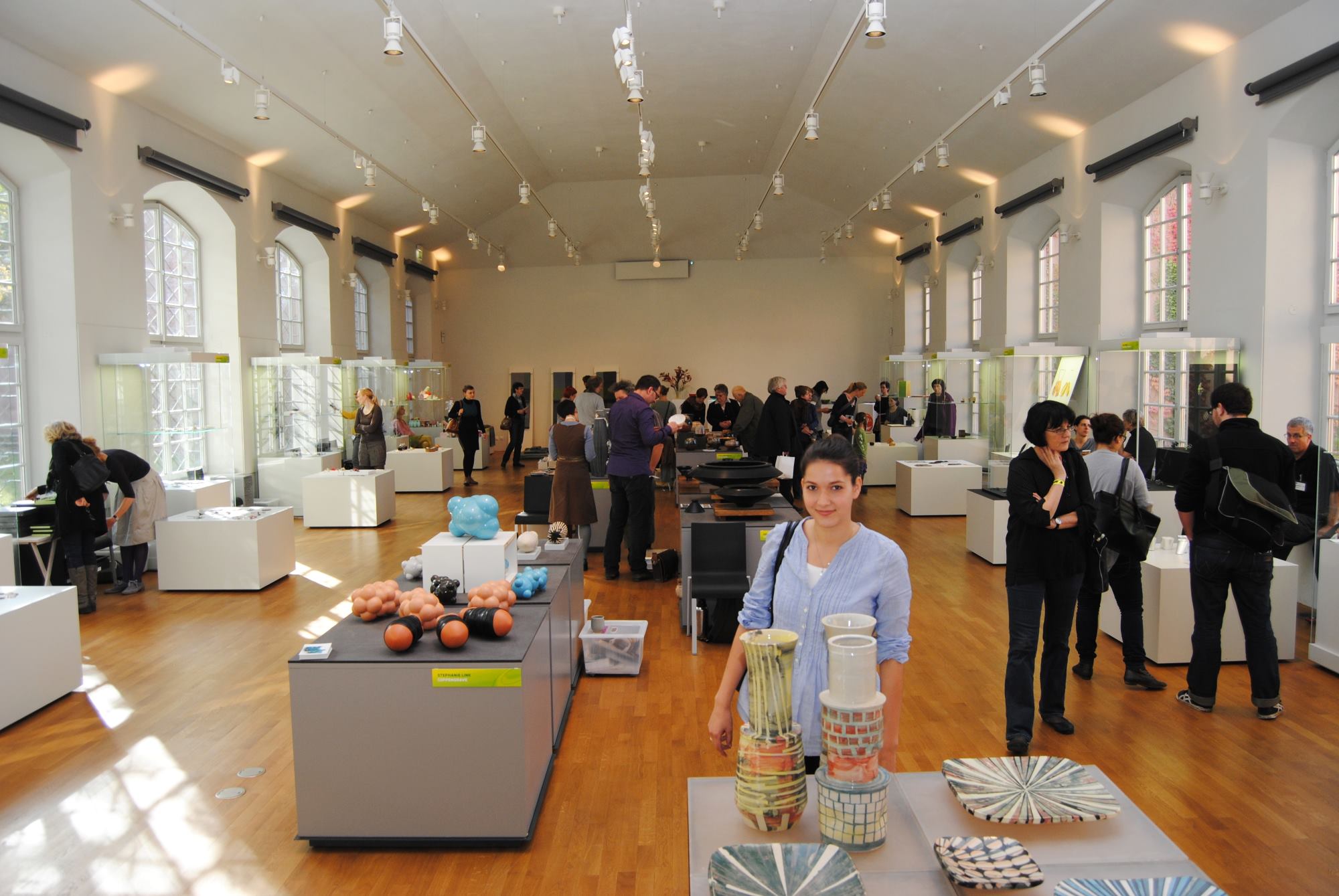
Alternative Music
The city is also making a splash on the musical front. Leipzig “(Pop Up” is an annual music trade fair for the independent music scene. The organizers’ definition of ‘independent’ is creative output in the various fields of music and pop culture and thus putting the music first and not the money. Leipzig (Pop Up is not only a trade fair, but also offers panels and workshops as well as a music festival in various clubs in Leipzig. A trademark of Leipzig (Pop Up is its strict low-price policy for exhibitors and visitors alike. Moon Harbour Recordings and Kann Records, two indie labels based in Leipzig, produce innovative electronica from D.J.’s.
City of Literature, Publishing and Media
In the so-called „Grafisches Viertel“ (Graphic Quarter) in Leipzig, the who is who of the German publishing scene used to reside. In 1912, 300 print offices and case rooms, 982 publishing houses and specialized book shops as well as 173 bookbinding shops operated in Leipzig. Almost every fifth book originated from Leipzig at that time. Today there still is a diverse literature and publishing industry in Leipzig that attracts worldwide attention. The Deutsche Literaturinstitut (DLL; German Literature Institute), founded in 1955 and steeped in tradition, is based in Leipzig and is the only institution of its kind in Germany which has turned creative writing into a vocation. Each year in March, Leipzig Book Fair and Europe’s largest festival of reading “Leipzig liest“ present popular as well as unknown authors and artists. Leipzig Media City, which is located in the former slaughterhouse in Altenburger Strasse and houses more than 60 companies from the media sector, was the location for the 2008 award-winning movie “Das Weiße Band” (The White Ribbon) by Michael Haneke. A couple of successful German TV productions originate from Leipzig, too. During a studio tour at MDR broadcasting channel, visitors can take a look behind the scenes of television production. The art of film has a long tradition in Leipzig, too. The Leipzig International “Festival für Dokumentar- und Animationsfilm” – shortened to Dok Leipzig – is Europe’s second largest film festival of its kind. Every year in October more than 300 animated and documentary films from more than 50 countries are presented.
Germany Tourism: This is your guide to 24 hours in Leipzig
Modern Architecture
The flair of the Leipzig city center is due to the special features of its urban architecture. There is no other European city with a comparably compact inner-city system of arcades and passageways that emerged from centuries of trading and trade fair activities. Architecture fans react enthusiastically when seeing the around 30 arcades, 20 of which are historical. Old trading palaces and courtyards from the Renaissance, Baroque, Art Nouveau and the historicist period blend harmoniously with modern buildings of the 20th/21st century. The most famous and probably the most glamorous arcade is Mädler Passage, whose history is connected with the popular Auerbachs Keller.
Leipzig Fair is regarded the “mother of trade fairs”. Leipzig’s commercial development was given a boost in the 1990s due to the construction of the ultramodern Leipzig Fair Exhibition Centre with its fascinating architecture.
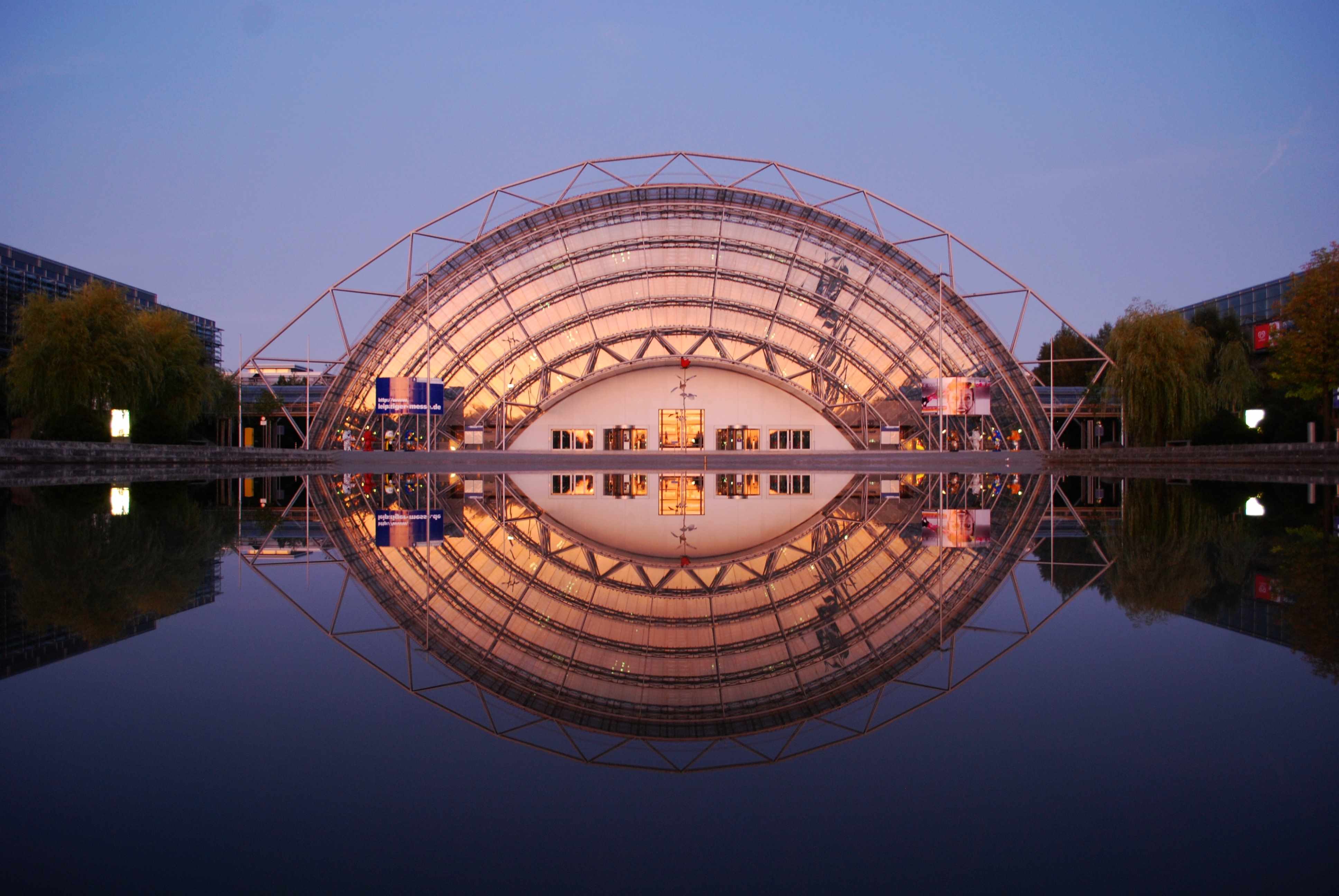
After being housed in temporary venues for 61 years, Leipzig’s Museum of Fine Arts was finally opened in 2004. This ‘art cube’, built within the space of just 4½ years and costing €75 million, is the first large new museum to have been built in eastern Germany since 1945. The museum contains around 7,000 square meters (80,000 square feet) of exhibition space. Museum highlights include a large collection of Flemish and Dutch genre paintings, the German Romantics, the Max Beckmann Hall and a presentation of works by Max Klinger. In addition, the 41 works by French impressionists from Corot to Monet donated by the married couple Bühler–Brockhaus are on display for the first time. The New Leipzig School is represented by artists such as Neo Rauch, Tilo Baumgärtel and others.
A fine example of modern architecture is Porsche Leipzig. Before you even arrive at the grounds of Porsche Leipzig, the architecture says it all: this is so much more than just a production facility. Technically, it offers the highest quality standards – emotionally, it promises an unforgettable stay. The diamond-like form of the Customer Center is an architectural tour de force and can be seen for miles. Within it, visitors will find a unique ambience that reflects Porsche’s philosophy of uncompromising engineering and design. Porsche Leipzig can be experienced individually or as a group and is included in various packages. According to your needs, you can either enjoy an excellent meal (brunch, lunch or dinner) in the Customer Center restaurant, a guided tour of the factory along the production line of the Panamera and Cayenne or a spectacular driving event out on the track (as pilot or co-pilot). Porsche Cayenne has been produced in Leipzig for several years now. The new Porsche model Panamera is now produced in Leipzig, too, and entered the German market in 2009.
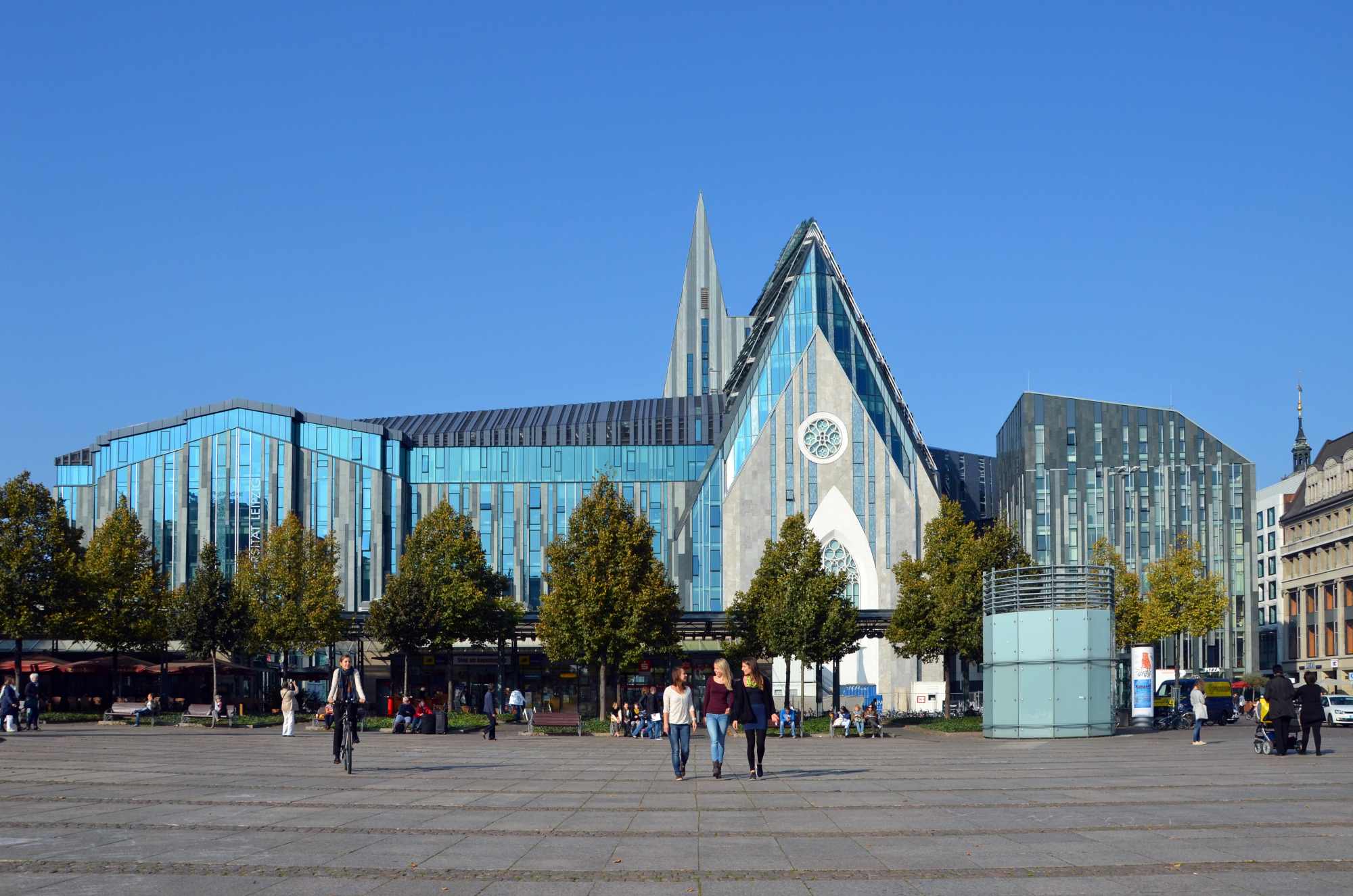
The new “Paulinum” is an architectural highlight that is part of Leipzig University, the second oldest university in Germany which celebrated its 600th anniversary in 2009. In 2004, an architectural competition was launched for a new campus at the old location in the middle of the city, on Augustusplatz (Augustus square). The old University Church St. Paul’s, which had survived World War II without damage, was blown up by the GDR government under Leipzig-born Walter Ulbricht in 1968. The spectacular plans for the new campus by Dutch architect Erick van Egeraat pay tribute to history. Having been completed in 2010, there is a new assembly hall and church building called “Paulinum”, an auditorium maximum, faculty buildings and a cafeteria. The existing lecture rooms and seminars were converted, extended and redeveloped, too. The “Paulinum” is also a suitable home for the works of art rescued from the old University church. Once again, on Augustusplatz, the University has a building complex worthy of its significance for the future of the state.
Shopping
Leipzig’s compact city center is ideal for a stroll and shopping tour. Located inside the central ring road sights, restaurants and shops are within walking distance and create a friendly atmosphere. Also Leipzig Central Station, one of Europe’s largest railway termini, was turned into a modern shopping center. Here you can shop ‘til you drop in about 140 shops on three floors.
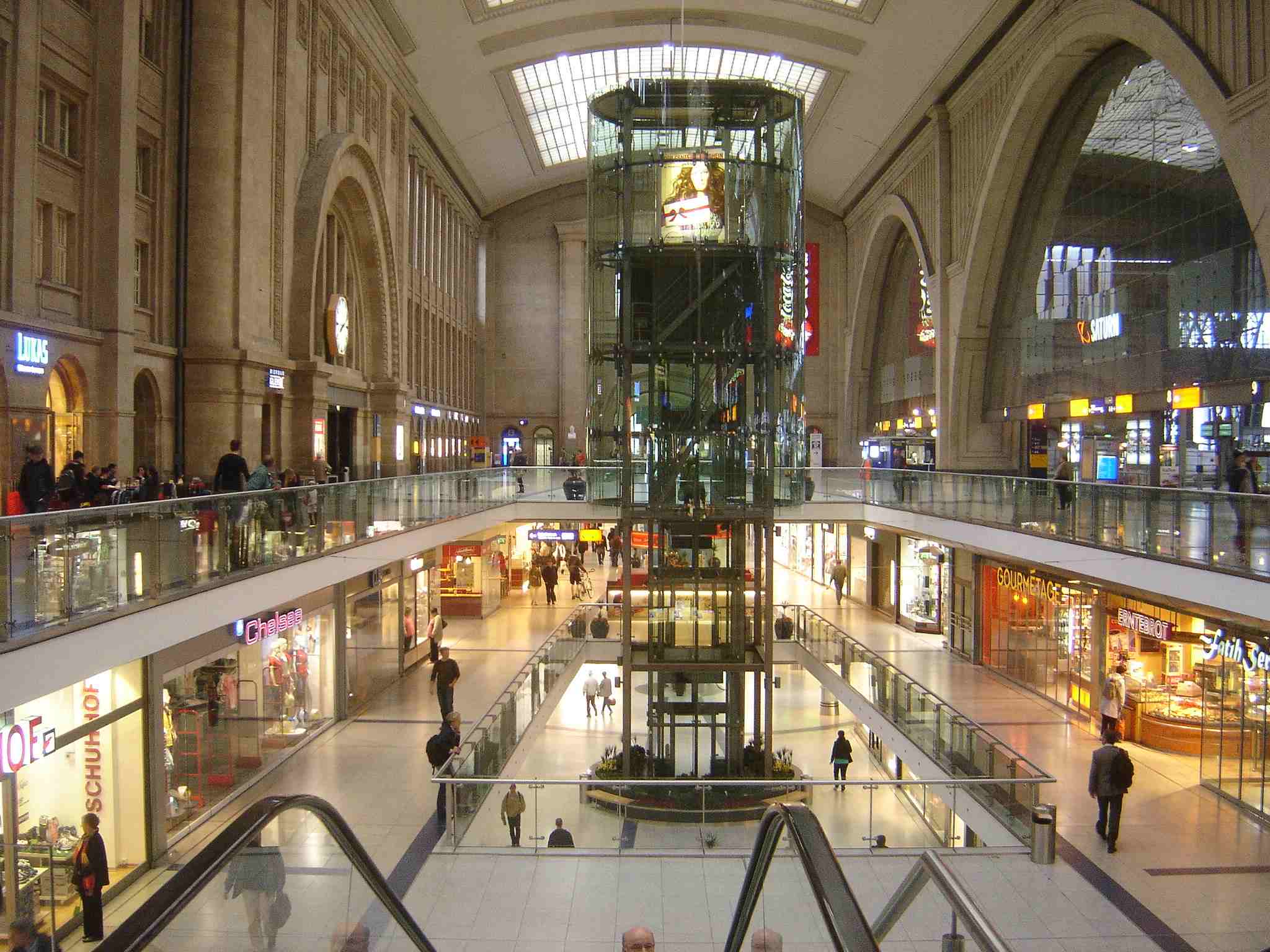
Dining Out
Peter Maria Schnurr’s cuisine is characterised by “passion and aesthetics”, which also holds true for the atmosphere in his restaurant. The dishes are unusual flavour experiences. Schnurr is the chef of FALCO Restaurant & Bar, which in 2009 became the first restaurant in the new German federal states that was awarded with two stars by the Guide Michelin. Located on the top floor of The Westin Leipzig, the restaurant owes its name to the many falcons frequently seen flying over Leipzig. Stadtpfeiffer is another prize-winning restaurant. It is located in Leipzig’s famous Gewandhaus concert hall and therefore ideal for combining music and culinary delights. One of the best-known restaurants in the world – famous for Goethe’s drama Faust – certainly is Auerbachs Keller, offering traditional Leipzig and Saxon delicacies.
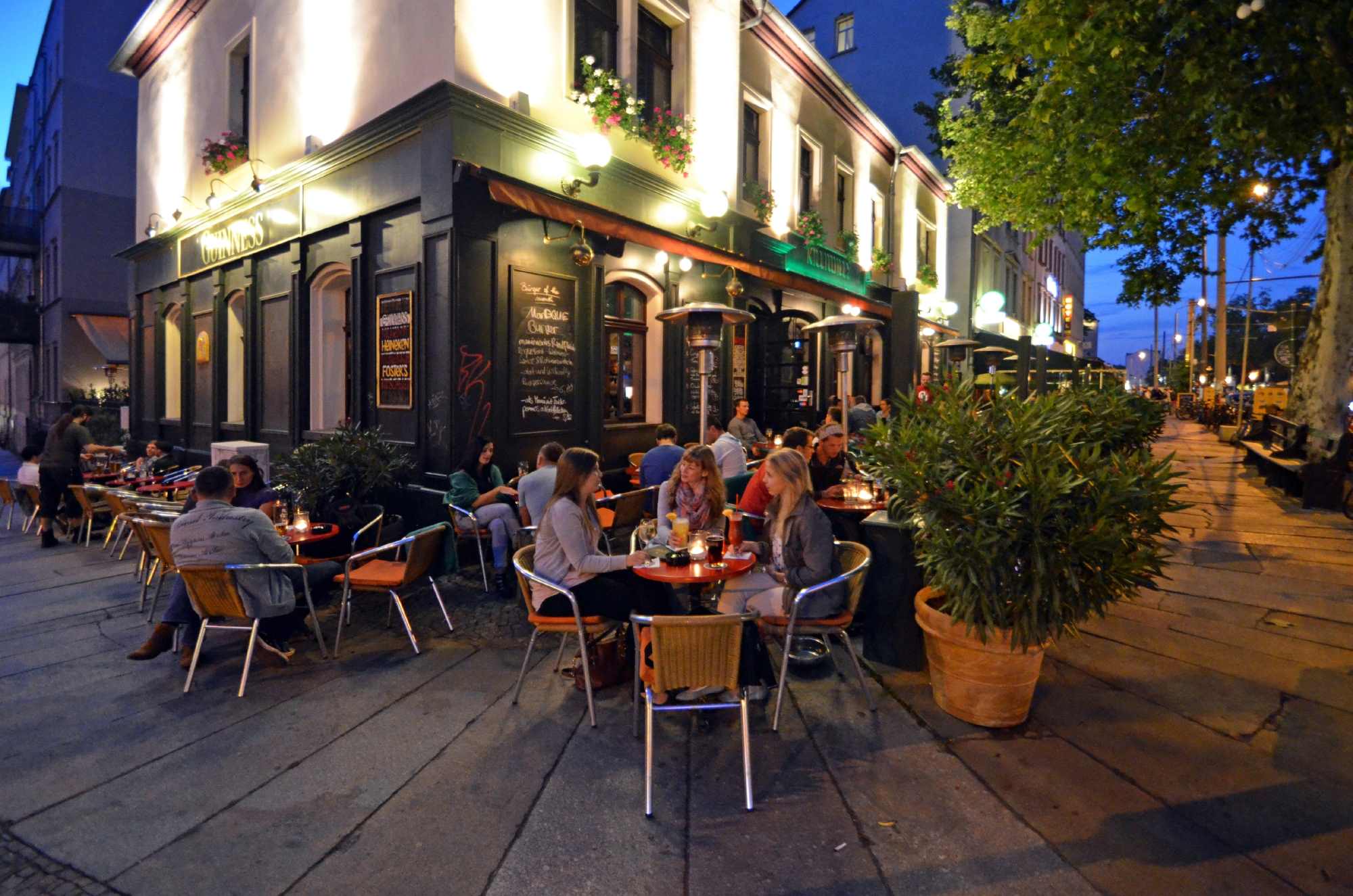
Nightlife and Cool Neighborhoods in ”LE”
If you happen to be nocturnal, there is plenty to get enthusiastic about – theaters, concert halls, variety shows and casinos. There are several dining and nightlife districts in Leipzig, including Drallewatsch, Schauspielviertel, Südmeile, Münzgasse, Gohlis and Plagwitz. And when you finally arrive in one of the many clubs or bars, you will realize that Leipzig is always wide awake and that the term “closing time” is not part of the local vocabulary. ”LE”, as the locals call their Leipzig with affection, has gained a great reputation as a city with street culture. The German word Freisitz (meaning something like street restaurant or café), which in other cities is often replaced by beer-garden, has become something like a cult word. Really big beer-gardens, like those in Bavaria, are rare in Leipzig. Instead, pubs and restaurants invite their guests to sit outside on the Freisitz. Of the 1,400 pubs and restaurants in Leipzig (everything from scenic pub to Chinese restaurant), 385 have established a Freisitz. With the exception of restaurants in concentrated residential areas, all places may stay open as long as they (or their guests) want – no closing time. After satisfying your hunger and quenching your thirst you can go on to Moritzbastei, Europe’s biggest students club, and dance the night away with music from blues to samba or dark wave. There is a unique flair in the old fortification vaults and an international public. Even Angela Merkel, the German chancellor, already came to party here – back in the Sixties when she was studying in Leipzig. Whether you love music, art, party or cars – the choice is up to you.
For further information on Leipzig, please visit leipzig.travel.
You may also like:
Destination Germany – Travel Resources
Train Stations In Germany
Odessa is the Ukrainian gateway for travel to the Danube Delta
Things I’ve noticed in 2017
Expedia – One Day in … Destination Video Series

As they say, Leipzig is the better Berlin !!!
https://www.nytimes.com/2014/09/07/travel/new-berlin-or-not-leipzig-has-new-life.html